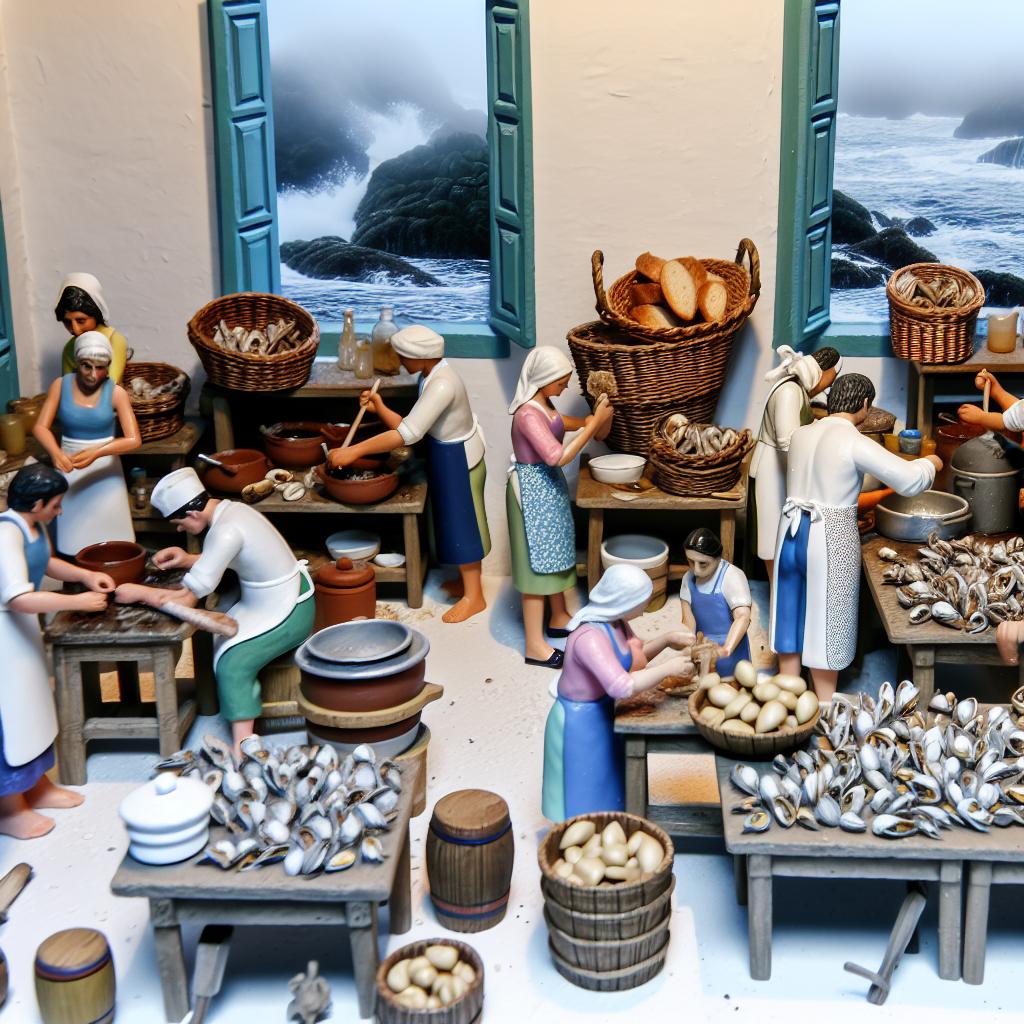
In the region of Galicia, located in the northwestern part of Spain, percebes, also known as goose barnacles, are considered a local delicacy. These crustaceans cling to rocks along the wave-swept Galician coast. Despite their odd appearance, percebes are highly valued in Spanish gastronomy, often fetching high prices.
Galicia, with its rugged coastline and unique geographical features, provides the perfect habitat for percebes. The rocky outcrops and tumultuous sea create conditions ideal for their growth. The cold Atlantic currents supply an abundance of nutrients, fostering a rich marine ecosystem where percebes thrive. This natural setting is crucial for the quality and flavor that make Galician percebes so sought after.
The collection of percebes is no task for the faint-hearted. It is a practice deeply ingrained in Galician culture, carried out by experienced percebeiros, or barnacle gatherers, who risk their lives climbing over slippery rocks in treacherous sea conditions. This tradition has been passed down through generations, with families often specializing in this daring profession.
Percebeiros typically use a specialized tool called a rasqueta, which is akin to a small knife or spatula, to pry the barnacles off the rocks. This process requires a combination of skill, timing, and courage due to the pounding waves and hidden risks of the coastal terrain. The art of harvesting not only involves physical dexterity but also an intimate knowledge of the tides and the best spots to find the prime percebes.
Sustainability is a growing concern for the harvesting of percebes. To ensure the long-term viability of these crustacean populations, there are regulations in place that limit the amount that can be harvested and the number of days they can be collected. Additionally, local communities are increasingly aware of the importance of enforcing these rules, with some areas even implementing closed seasons and monitoring programs to help maintain ecological balance and preserve the species for future generations.
The significance of percebes extends beyond their culinary value. Economically, they contribute significantly to the livelihoods of many coastal communities in Galicia. The high prices percebes fetch in the market reflect not only their gourmet status but also the risks and efforts involved in their collection. Culturally, they embody the deep connection between the Galician people and the sea, a relationship characterized by knowledge, respect, and a shared heritage.
Once harvested, the preparation of percebes for consumption is relatively simple. Their unique flavor, which captures the essence of the ocean, is best appreciated when cooked minimally, allowing the natural taste of the sea to come through.
To prepare percebes, they are typically boiled in saltwater for a short period, often just a minute or two, depending on their size. It is crucial not to overcook them, as this can lead to a loss of flavor and texture. After boiling, they are usually served immediately to retain their freshness and taste.
Percebes are often served as a starter or as part of a seafood platter. It is common to eat them by peeling away their tough outer ‘neck’ before consuming the tender inner flesh. Their briny taste, reminiscent of the ocean, pairs well with chilled Albariño, a local Galician wine. This pairing complements the flavor profile of percebes, enhancing the dining experience.
Beyond their gastronomic appeal, percebes in Galicia are a testament to the region’s rich maritime culture and the bravery of the percebeiros who harvest them. This unique delicacy offers a taste of the ocean’s bounty, connecting those who savor them to the landscapes and lives shaped by the Atlantic. For enthusiasts looking to delve deeper into Galician cuisine and its diverse offerings, exploring regional culinary guides can open up a world of flavors and traditions.
The rise in interest in traditional and regional foods has helped shine a spotlight on Galicia’s culinary treasures, with percebes taking a central role. Efforts to promote and protect these local specialties are essential to preserving Galicia’s gastronomic identity. By supporting responsible harvesting and consumption, future generations can continue to enjoy the richness of this maritime gem.
For those interested in learning more about the distinct flavors and techniques that define Galician food, seeking out additional resources can provide valuable insights. The intersection of history, lifestyle, and cooking creates a deep and engaging narrative that enriches the appreciation of Galicia’s culinary landscape.